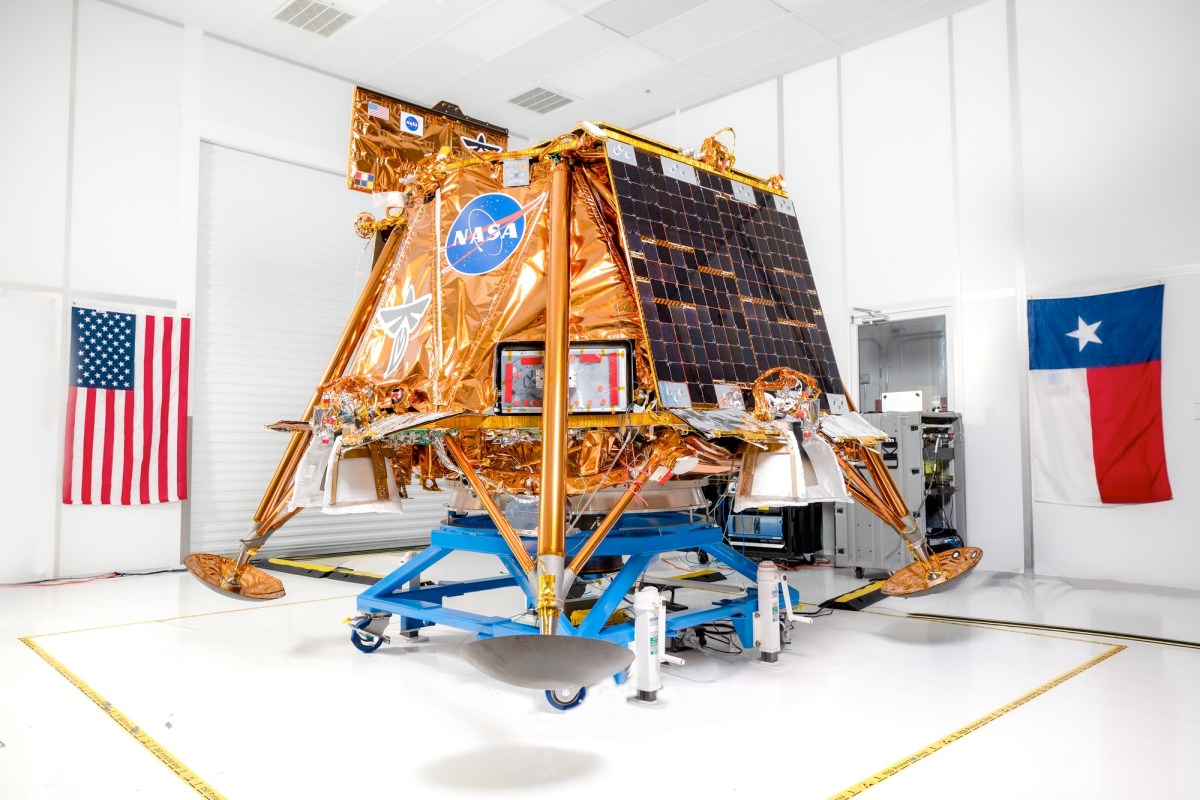WASHINGTON — Firefly Aerospace says it is planning a launch of its first lunar lander mission in January, meaning that none of the three commercial lander missions once slated to launch in the fourth quarter of this year will do so.
Firefly announced Nov. 25 that it is planning to launch its Blue Ghost 1 lander mission during a six-day window in mid-January. The spacecraft will launch on a SpaceX Falcon 9 from Florida.
The announcement of the launch date came after the spacecraft completed testing in October at NASA’s Jet Propulsion Laboratory. “Blue Ghost aced environmental testing and proved the lander is performing 100% as expected,” Jason Kim, chief executive of Firefly, said in the statement announcing the launch date. “While we know there will be more challenges ahead, I’m confident this team has what it takes to softly touch down on the lunar surface and nail this mission.”
The company had previously been planning a launch of the spacecraft in the fourth quarter of 2024, but did not offer a more specific date. Speaking at a meeting of the Lunar Exploration Analysis Group (LEAG) Oct. 29, Joseph Marlin, chief engineer of Firefly’s Elytra Dark spacecraft, again offered a launch date of the fourth quarter but said he could not be more specific, suggesting it was based on launch vehicle availability. “SpaceX is still sorting out its schedule,” he said then.
Blue Ghost is the company’s first lunar lander mission. The spacecraft will carry 10 NASA payloads through the Commercial Lunar Payload Services (CLPS) program. NASA awarded Firefly a task order for the mission in February 2021 valued at $93.3 million, with a launch originally projected for 2023. Firefly has not announced if there are any non-NASA payloads on the spacecraft.
The mission, called “Ghost Riders in the Sky” by the company, will last about 60 days. That includes a 45-day transit to the moon where the spacecraft first operates in phasing orbits around the Earth before going to the moon and entering orbit there. The spacecraft is intended to land near Mons Latreille, a volcanic feature within Mare Crisium on the northeastern part of the near side of the moon. The lander is designed to operate for a full two-week lunar day and several hours into the lunar night.
At one point this fall, as many as three commercial lunar lander missions were slated to launch in the fourth quarter of the year, but now none of them will do so. Japanese company ispace announced Nov. 12 in an earnings release for its fiscal second quarter that its Mission 2 lunar lander, once projected to launch in December, is now planned for launch no earlier than January. Like Firefly, the lander will launch on a SpaceX Falcon 9.
Intuitive Machines, which had been targeting a launch in December or early January for its IM-2 mission, announced in a Nov. 14 earnings call that the mission is now scheduled to launch no earlier than February on a Falcon 9. The company did not disclose a reason for the slip.
Intuitive Machines, though, may still beat Firefly to the surface of the moon. The IM-2 mission, like IM-1 that launched in February 2024, will take a more direct route to the moon, with a landing about a week after launch. At the LEAG meeting, Firefly’s Marlin said the two companies have been in discussions about how to deconflict their landings, like ensuring communications don’t interfere with one another.
